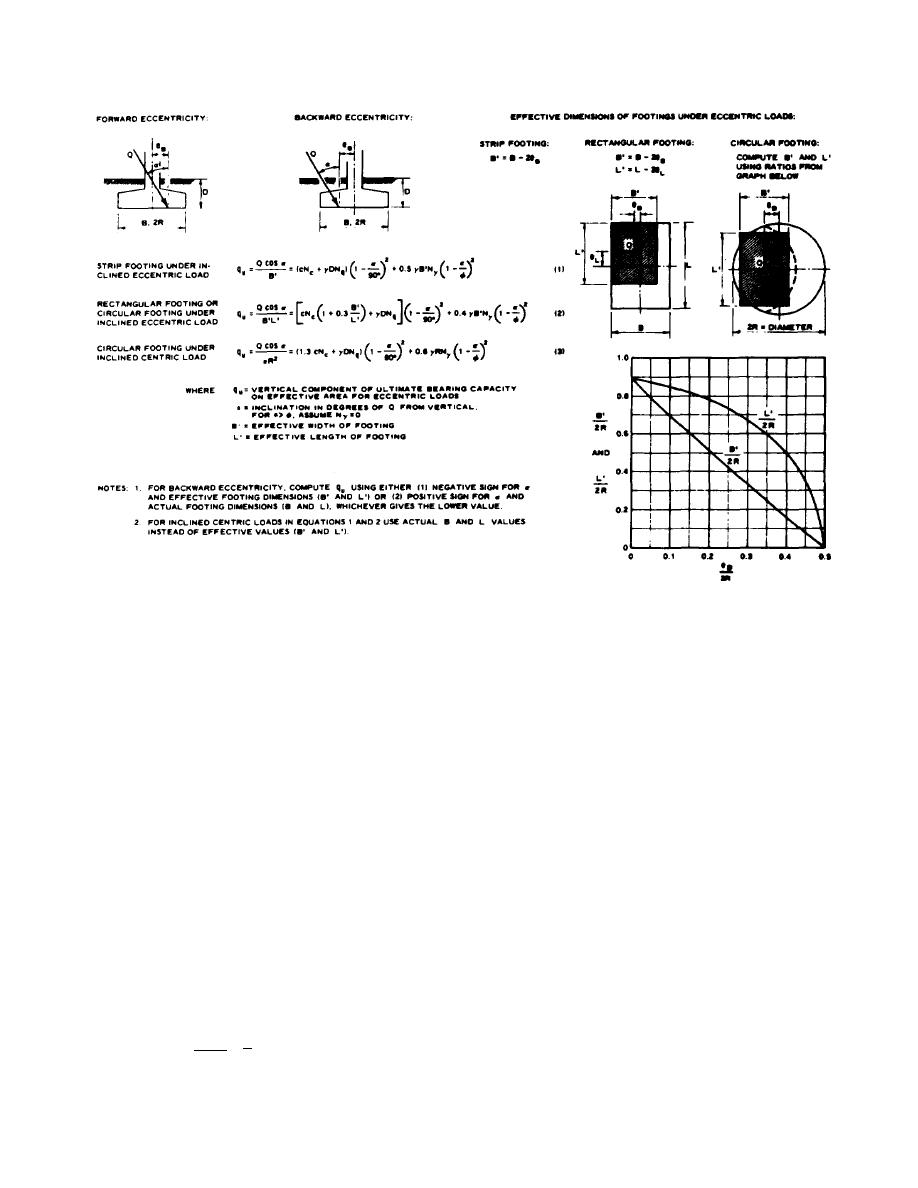
TM 5-818-1 / AFM 88-3, Chap. 7
U. S. Army Corps of Engineers
Figure 6-3. Ultimate bearing capacity of shallow foundations under eccentric inclined loads.
than the width of the foundation, the factor of safety
where W is the total effective weight of soil and concrete
should be applied to the net load (total weight of
located within the prism bounded by vertical lines at the
structure minus weight of displaced soil).
base of the footing. Use total unit weights above the
c. Stratified subsoils. Where subsoils are
water table and the buoyant unit weight below. If the
shear resistance on the vertical sides of the prism
variable with depth, the average shear strength within a
defined above is considered, a minimum safety factor of
depth below the base equal to the width of the loaded
2 should be used. The lateral earth pressure on the
area controls the bearing capacity, provided the strength
vertical sides of the prism should not exceed earth
at a depth equal to the width of the loaded area or lower
pressure at rest and should be considered as active
is not less than one-third the average shear strength of
earth pressure if the soil is not well compacted.
the upper layer; otherwise, the bearing capacity is
governed by the weaker lower layer. For stratified
cohesive soils, calculate the ultimate bearing capacity
6-5.
Bearing capacity of rock. For a structure
from the chart in figure 6-6. The bearing pressure on the
founded on rock, adequate exploration is necessary to
weaker lower layer can be calculated by distributing the
determine the number and extent of defects, such as
surface load to the lower layer at an angle of 30 degrees
joints, shear zones, and solution features. Estimates of
to the vertical.
the allowable bearing pressure can be obtained from
table 6-1. Conservative estimates of the allowable
6-4.
Tension forces.
Footings subjected to a
bearing pressure can be obtained from the following
sustained uplift force, Tu, should be designed with a
minimum factor of safety of 1.5 with respect to weight
qa = 0.2 qu
(6-2)
forces resisting pullout expressed as
Allowable bearing pressures for jointed rock can also be
W
>
1.5
(6-1)
estimated from RQD values using table 6-2. Local
Tu
experience should always be ascertained.
6-5


 Previous Page
Previous Page
